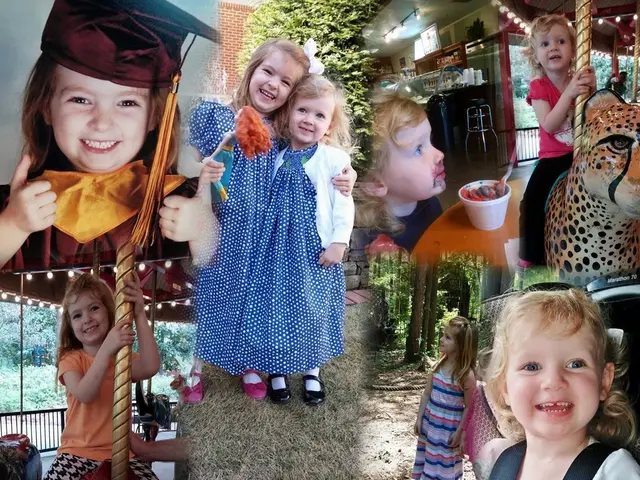Understanding and Implementing Character Types: A Guide
Draw From Timeless Archetypes to Fuel Your Script
Storytelling is rooted in the human psyche, and character roles like the Hero, Mentor, and Trickster help ignite your narrative spark. By employing these universal models, you craft compelling, relatable tales that captivate audiences on an emotional level.
Brace yourself for insights into these character archetypes and their origins, as well as strategies to craft unique narratives that resonate with your viewers. This guide will show you how to weave these archetypes into your script and create engaging, multidimensional characters.
- Unpacking Character Archetypes
- The history behind character archetypes
- How archetypes set the stage for character interactions and plot development
- Understanding the power of utilising instantly recognisable figures
- Archetypes and Narrative Structure
- Exploring Joseph Campbell's Hero's Journey
- Illustrating how archetypes influence plot progression, themes, and style
- Dynamics among characters and their impact on storytelling
- Engaging, Relatable Characters
- Strategies for crafting interesting yet familiar characters
- Finding the balance between predictability and surprise
- Utilising supporting characters to enrich your primary characters
- Tailoring Archetypes for Fresh Spins
- Reimagining traditional roles for innovative storytelling
- Mixing and matching archetypes to create complex dynamics
- Adding cultural context or unique settings to enhance relevance
- Emotional Resonance: Empathy Mapping
- Incorporating empathy mapping to create characters that evoke strong emotions
- Deepening conflicts to increase viewer engagement
- Guiding emotional investment for lasting impact
As a bonus, let's take a look at how popular screenplays such as Mamma Mia! and Friends effectively employ character archetypes to draw audiences into their narratives.
Unpacking Character Archetypes
Character archetypes are the framework for storytelling, with roots dating back to the dawn of storytelling. These captivating symbols help you craft narratives that touch viewers across cultures and timeframes. By relying on recurring patterns of human behaviour and psychology, archetypes offer you the toolkit to create characters that resonate immediately with your audience.
Carl Jung introduced the idea of archetypes as part of the collective unconscious, laying the groundwork for their application in screenwriting. With models like the Hero, Mentor, or Trickster, you establish the foundation for your story. Archetypes serve as familiar guides, assisting your audience in navigating your plot and its themes more easily.
By leveraging archetypes, you automatically add depth to your storytelling. Consider films such as The Lion King, where Simba embodies the Hero archetype on a hero's journey of self-discovery and redemption. This widely accessible, universal character journey captivates the audience's imagination. Although audiences might recognise the archetype, they remain invested due to the writer's creative handling of it.
Archetypes and Narrative Structure
Archetypes serve as more than just characters; they form the foundation of your narrative. The relationships among characters shape plot development, pacing, and themes in a way that ensures your audience remains engaged. Archetypes set expectations and assure your story makes sense on an emotional level.
- Joseph Campbell's Hero's Journey: This framework outlines the growth of the hero through trials, reflecting experiences that resonate with the audience. By structuring your narrative around this archetype, your screenplay becomes more accessible and intriguing.
- Pivotal influences: Characters like the Mentor and Threshold Guardian propel the hero forward, signalling significant shifts in a story's plot and setting the tone for the next challenge.
- Exploring themes: Themes often emerge through the role of archetypal characters, who act as mirrors or touchstones for the audience's emotions.
- Unpredictability: Combining archetypes can introduce complexity and unpredictability in your plot, creating an exciting, polished narrative arc.
Integrating archetypes into your story's structure causes it to flow naturally, making it resonate deeper with your audience. By working with well-defined archetypes, your screenplay becomes easy to follow and engaging, ensuring a lasting impact on viewers.
Engaging, Relatable Characters
Employing archetypes is crucial for creating relatable characters that connect with your audience. By starting with a recognisable archetype, you provide a starting point for your character development journey, adding depth with unique quirks and complexities.
For instance, a traditional protagonist whom we label as a hero might embody strengths, determination, and confidence, but adding vulnerabilities-fears, self-doubt, or challenging pasts-makes them accessible and engaging to the audience. This balance between heroism and humanism enables your viewers to empathise with the character on an emotional level.
- Predictability with a twist: Viewers expect certain things from a hero, so use their preconceptions to your advantage by introducing unexpected traits or subverting roles.
- Supporting characters: Secondary characters can act as mirrors or contrasts to the hero, developing the plot and enhancing complexity.
- Innovative storytelling: Subverting traditional gender norms or breaking genre conventions by casting characters in unconventional archetypal roles can add layers to your narrative, while staying true to your vision.
When writing a screenplay, focus on creating multifaceted characters who evolve within the archetypal framework, ensuring they remain grounded and unforgettable.
Tailoring Archetypes for Fresh Spins
Tired of the same narrative tropes? Customising archetypes breathes new life into your storytelling while retaining their powerful essence. By daring to take risks with your archetypes, you can catch your audience off-guard, deepen your narratives, and keep your stories from feeling formulaic.
Consider adjusting traditional roles, such as a mentor lacking experience or a trickster harbouring a serious backstory. This reimagining disrupts expectations and creates narrative tension.
- Mix and match archetypes: Blend archetypes like a mentor becoming an antagonist to create deeper engagement.
- Cultural context or unique settings: Add fresh perspectives by tailoring archetypes to new settings or cultures, making them more relevant to diverse audiences.
- Breaking gender norms: Subtly challenge assumptions about gender and genre by casting characters in unconventional archetypal roles.
By experimenting with these roles, you have the power to impact storytelling deeply, both on-screen and on the page. Audiences connect with stories that take them on surprising, yet believable journeys, a feat achievable through daring to customise archetypes skillfully.
Exemplary Screenplays
Successful screenplays often serve as shining examples of character archetype use that drives their narrative structure. Analyzing these scripts can reveal strategies for putting archetypes to effective use, making your script stand out.
- Mamma Mia! masterfully incorporates established character archetypes like the naive young protagonist (Sophie) and the wise mentor (mother, Donna). The script adds complexity and nuance to these characters, allowing them to evolve, making them intriguing to viewers.
- Friends is a TV show example, with characters such as Monica as the Warrior, Rachel as the Child, Phoebe as the Creator, Ross as the Magician, Joey as the Joker, and Chandler as the Orphan. The alignment of these archetypes enhances the show's comedy and character development.
- Star Wars employs familiar archetypes like Luke Skywalker as the Hero, Princess Leia as the Damsel with increased agency, Obi-Wan Kenobi as the Mentor, Han Solo as the Trickster or Ally, and Darth Vader as the Villain or Shadow. The structure, character roles, and relationships in Star Wars reflect timeless storytelling at its finest.
- The Shawshank Redemption and The Secret Life of Walter Mitty each present protagonists embodying the Everyman archetype, Andy Dufresne and Walter Mitty. Their ordinary backgrounds and personal growth journeys make them highly relatable, illustrating how the Everyman can become the unlikely hero.
- Top Gun portrays Maverick, a Hotshot archetype – skilled yet reckless, driven by personal ambition and a need to prove himself. This archetype is central to the film's narrative tension and protagonist's arc, making the story engaging and memorable.
- Character Archetypes in Diverse Domains Applying character archetypes isn't exclusive to storytelling and filmmaking; they can be found in various aspects of life. By recognizing these patterns, we can draw parallels between narrative structure and lifestyle areas, such as fashion-and-beauty, education-and-self-development, and personal-growth.
- Fashion-and-Beauty: Archetypes can help create distinct, captivating brands or personal styles. A Hero archetype might represent a fashion designer who champions innovative, sustainable fabrics, while the Everyman archetype could symbolize someone who finds their self-expression through individualistic style choices.
- Education-and-Self-Development: The Teacher archetype might be represented by a trainer who helps students achieve their personal growth goals. The Mentor archetype can serve for a tutor who provides guidance and nurtures the development of their learners. Employing archetypes in educational settings can optimize learning experiences, helping students connect with teachers on an emotional level.
- Personal-Growth and Career-Development: Understanding archetypes can empower individuals in achievingself-improvement goals, such as a Hero archetype personifying an ambitious career-driven professional striving to make a significant impact or the Warrior archetype symbolizing a self-improvement warrior devoted to their mental and physical well-being.
By understanding and employing character archetypes, we can craft compelling narratives for our lives, businesses, and personal growth, making our stories more relatable, engaging, and impactful.








